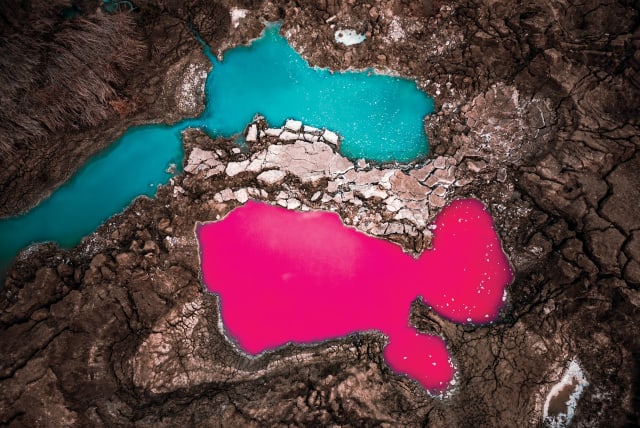Half of the world's largest lakes are losing water - study

Unsustainable human use, changes in rainfall and run-off, sedimentation, and rising temperatures have driven lake levels down globally, a new report that looked at 2,000 lakes found.
Over 50% of the world’s largest lakes and reservoirs have lost significant amounts of water over the last three decades, according to a new study.
About one-quarter of the world’s population lives in the basin of a drying lake, according to the study, published Thursday in the peer-reviewed journal Science. The international team of scientists behind the research pin blames it largely on climate change and the over-use of water.
The team examined almost 2,000 large lakes using satellite measurements combined with climate and hydrological models. They found that unsustainable human use, changes in rainfall and run-off, sedimentation, and rising temperatures have driven lake levels down globally. The report, based on satellite image data collected between 1992 and 2020, found that 53 percent of lakes showed a decline between those years.
Lead author Fangfang Yao from the University of Virginia said the shrinking of many lakes has been well documented, but the extent of change – and the causes – have been less thoroughly examined. Now that a comprehensive analysis has been done, Yao said, researchers have a method of tracking lake water storage trends and the reasons behind them.
Now scientists can give water managers and communities insight into how to better protect critical sources of water and important regional ecosystems, Yao said, adding: “This is the first comprehensive assessment of trends and drivers of global lake water storage variability based on an array of satellites and models."
Which lakes are most in danger?
Lakes that are significantly in trouble include Israel's Dead Sea, The Colorado River’s Lake Mead in Southwest US, which has receded dramatically amid a megadrought and decades of too much use and the Caspian Sea, between Asia and Europe, the world’s largest inland body of water, which has long been diminishing due to climate change and water use.
In the case of the Dead Sea, a salt lake bordered by Jordan to the east and Israel to the west, the water level recedes each year by another meter or so. Therefore, more sinkholes appear along the shoreline, swallowing up gas stations, restaurants, agricultural fields and beaches.
Water levels rose in a quarter of the lakes too, researchers said, often because of dam construction in remote areas such as the Inner Tibetan Plateau.
Natural lakes and dams store about 87 percent of the Earth’s freshwater, although they cover just 3 percent of the Earth's surface.
The Environment and Climate Change portal is produced in cooperation with the Goldman Sonnenfeldt School of Sustainability and Climate Change at Ben-Gurion University of the Negev. The Jerusalem Post maintains all editorial decisions related to the content.
Jerusalem Post Store
`; document.getElementById("linkPremium").innerHTML = cont; var divWithLink = document.getElementById("premium-link"); if (divWithLink !== null && divWithLink !== 'undefined') { divWithLink.style.border = "solid 1px #cb0f3e"; divWithLink.style.textAlign = "center"; divWithLink.style.marginBottom = "15px"; divWithLink.style.marginTop = "15px"; divWithLink.style.width = "100%"; divWithLink.style.backgroundColor = "#122952"; divWithLink.style.color = "#ffffff"; divWithLink.style.lineHeight = "1.5"; } } (function (v, i) { });

